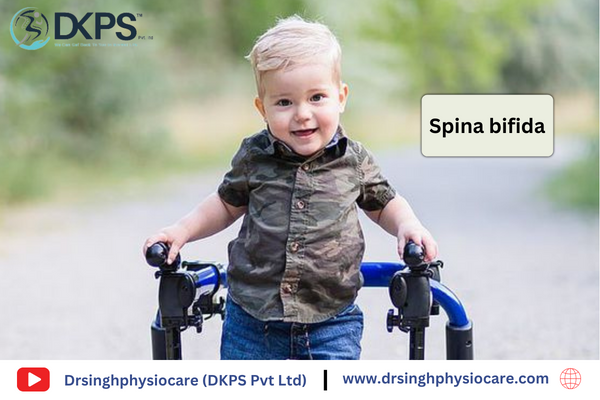- Home
- About Us
- DKPS Dealing
- BLOG
- Delhi NCR
- Delhi
- Physiotherapy at Home Near Me | Physiotherapist in South Delhi
- Best Chiropractor in Delhi
- Physiotherapist in Delhi
- Cupping Therapy in Delhi
- Home Nursing Services in Delhi
- Needle Therapy for Back Pain
- Sports Injury Physiotherapy
- Best Physiotherapist Visit at Home in Rohini Sector 24
- Physiotherapy at Home In Rohini Sector 9 |
- Physiotherapist in Pitampura | Physiotherapy at Home in Pitampura
- Physiotherapy at home in Rohini sector 29
- Physiotherapist in Paschim Vihar
- Physio home visit | Home Visit Physiotherapy |
- Physiotherapist in Saket | Best Physiotherapist in Saket |
- Physiotherapist In Janakpuri | Best Physiotherapist in Janakpuri |
- Best Physiotherapist in Punjabi Bagh | Punjabi Bagh Physiotherapist |
- Best Physiotherapist Service at Home in Dwarka, Delhi
- Best Physiotherapist in Chandigarh at Home Visit
- Faridabad
- Gurugram
- Noida
- Best Physiotherapy Gorakhpur
- Best Physiotherapist in Lucknow | Physiotherapist in Lucknow near me |
- Delhi
- Mumbai
- Delhi NCR
- Department
- Doctors
- Gallery
- Packages
- Contact Us
- Home
- About Us
- DKPS Dealing
- BLOG
- Delhi NCR
- Delhi
- Physiotherapy at Home Near Me | Physiotherapist in South Delhi
- Best Chiropractor in Delhi
- Physiotherapist in Delhi
- Cupping Therapy in Delhi
- Home Nursing Services in Delhi
- Needle Therapy for Back Pain
- Sports Injury Physiotherapy
- Best Physiotherapist Visit at Home in Rohini Sector 24
- Physiotherapy at Home In Rohini Sector 9 |
- Physiotherapist in Pitampura | Physiotherapy at Home in Pitampura
- Physiotherapy at home in Rohini sector 29
- Physiotherapist in Paschim Vihar
- Physio home visit | Home Visit Physiotherapy |
- Physiotherapist in Saket | Best Physiotherapist in Saket |
- Physiotherapist In Janakpuri | Best Physiotherapist in Janakpuri |
- Best Physiotherapist in Punjabi Bagh | Punjabi Bagh Physiotherapist |
- Best Physiotherapist Service at Home in Dwarka, Delhi
- Best Physiotherapist in Chandigarh at Home Visit
- Faridabad
- Gurugram
- Noida
- Best Physiotherapy Gorakhpur
- Best Physiotherapist in Lucknow | Physiotherapist in Lucknow near me |
- Delhi
- Mumbai
- Delhi NCR
- Department
- Doctors
- Gallery
- Packages
- Contact Us
Spina bifida
- Home
- Spina bifida

Spina bifida :
Define Spina Bifida?
A
spine condition called spina bifida is typically noticeable from birth. An
illustration of a neural tube defect (NTD) is this. Anywhere along the spine,
if the neural tube is unable to close entirely, spina bifida may develop. A
congenital condition that affects the spine and spinal cord is called spina
bifida
Here is some additional information on spina bifida:
1. Spina Bifida Causes: The specific cause of spina bifida is unknown, however it is thought to be a combination of genetic, dietary, and environmental factors. A family history of neural tube abnormalities and a folate (vitamin B-9) deficit during pregnancy are two risk factors for spina bifida. Before and throughout pregnancy, folate supplementation is sometimes recommended to reduce the incidence of spina bifida and other neural tube defects.
2. Spina Bifida Types:
Spina bifida is classified into four categories:
a. Occulta: The spinal cord and surrounding components are normally normal in this form, but there may be a small gap in one or more of the vertebrae. It commonly goes undiagnosed since it rarely produces symptoms.
b. Defects in the Closed Neural Tube: The spinal cord is not adequately developed in this case and is covered by skin. Depending on the location and degree of the abnormality, it can cause a number of neurological symptoms.
c. Meningocele: The protective coating around the spinal cord (meninges) pushes through a hole in the spine, forming a sac filled with cerebrospinal fluid. While meningoceles can result in neurological problems, myelomeningoceles typically produce more severe cases.
d. Myelomeningocele: The spinal cord and its protective covering (meninges) emerge through a hole in the spine in this most severe form of spina bifida. It frequently causes considerable nerve damage, which can lead to paralysis, bowel and bladder issues, and other complications.
3. Diagnosis: Prenatal screening and imaging, like ultrasound, are commonly used to identify spina bifida. Maternal serum alpha fetoprotein (MSAFP) tests can also be utilized to detect abnormalities in the neural tube. Physical examination and imaging investigations such as MRI may confirm the diagnosis after birth.
4. Medication: Depending on the kind and severity of the condition, there are many treatments for spina bifida. There are two basic therapeutic options:
a. Surgery: In many situations, surgery is required to correct the deformity. To minimize difficulties and prevent infection, surgery for myelomeningocele is usually performed during the first 24 to 48 hours of birth. As the kid grows, additional procedures may be required.
b. Foetal Surgery: In some situations, particularly with myelomeningocele, foetal surgery during pregnancy may be explored to fix the anomaly before birth. This is a complicated operation that is usually reserved for cases that meet specified criteria.
5. Continuous Management:
a. Physical Therapy: Physical treatment is beneficial to many people who have spina bifida. Physical therapy can help patients by increasing their muscular mass, suppleness, and range of motion. They can also assist in the management of orthopaedic disorders such as scoliosis, which is more common in patients with spina bifida.
b. Occupational Therapy: Occupational therapists help people improve skills for daily activities like dressing, feeding, and self-care in order to maximize independence.
c. Bowel and Urological Care: Spina bifida patients frequently have bowel and urine incontinence. In order to maintain urinary and bowel health, managing these problems frequently entails using a combination of drugs, catheterization, and bowel control regimens.
d. Orthopaedic Care Managing the condition’s potential musculoskeletal complications may include orthopaedic specialists. Addressing conditions like clubfoot or hip dysplasia can fall under this category.
e. Neurological Treatment: For people with more severe forms of spina bifida, ongoing neurological monitoring and management may be required.
f. Emotional and Psychological Support: Spina bifida is a chronic illness that can have an emotional and psychological toll. Individuals and families can get the support they need to deal with the difficulties and tensions brought on by the condition through counselling and support groups.
g. Education and developmental support may be necessary for many spina bifida patients in order to address developmental delays or learning difficulties.
6. Prevention: There are steps that can be taken to reduce the chance of spina bifida, even if it cannot always be avoided:
a. A sufficient quantity of folate can considerably lower the incidence of neural tube defects like spina bifida, hence pregnant women are frequently advised to take folic acid supplements both before and throughout pregnancy.
b. Genetic counselling: Genetic counselling can help families with a history of neural tube abnormalities understand their risk and possible prophylactic measures.
c. Healthy Pregnancy Practices: Keeping a healthy lifestyle during pregnancy, such as eating the right foods and abstaining from particular drugs or substances, can help the foetus develop normally.
7. Mobility aids and assistive devices Spina bifida sufferers may use assistive devices like wheelchairs, braces, or crutches to improve their movement and independence, depending on the severity of their mobility limitation. To suit specific requirements, these devices are frequently modified.
8. Shunt Alignment Patients with spina bifida may also occasionally develop hydrocephalus, a condition in which there is a buildup of CSF fluid in the brain, particularly if they also have myelomeningocele. This could lead to an increase in intracranial pressure, which would require the placement of a shunt to divert excess fluid from the brain and into a part of the body where it could be absorbed.
9. Continuous Medical Monitoring Patients with spina bifida often need lifetime medical care to manage any lingering effects or new health problems that may arise. It’s imperative to visit specialists and basic care doctors frequently.
10. Making the Transition to Adulthood There is a need to move spina bifida patients from pediatric to adult healthcare services as they get older. This change includes handling issues with social integration, employment, education, and healthcare.
11.Support for Social Activities and Independent Living: With the correct help and accommodations, many spina bifida patients are able to lead independent lives. People with disabilities can access resources and lead fulfilling lives in their communities with the aid of support systems and social services.
12. Research and developments: The goal of ongoing research is to further our knowledge of and ability to treat spina bifida. Advances in medical technology and medications are contributing to the ongoing improvement of the quality of life for those suffering from this illness.
13. Education and Advocacy: Spina bifida parents frequently take on the role of their children’s educational needs’ champions. This could entail collaborating with educational institutions to create Individualized Education Plans (IEPs) that meet certain educational needs and accommodations.
14. Support for Employment and Career Development: When people with spina bifida reach adulthood, they can need support in finding acceptable work options as well as vocational training. Programs for vocational rehabilitation can help with acquiring job skills and finding employment.
15. Recreation and social gatherings: The overall health of people with spina bifida depends on encouraging them to engage in social and leisure activities. Social clubs, cultural activities, and accessible sports all offer chances for personal growth and sociability.
16. Pain Management Chronic discomfort can affect certain spina bifida sufferers, especially those with severe physical problems.Using efficient pain management methods, such as physical therapy, medications, and therapies, may be crucial.
17. Ongoing Support for Mental Health: Spina bifida sufferers and their families may experience emotional and psychological stress as a result of living with the condition. For overcoming these difficulties, having access to mental health services like therapy and support groups can be quite helpful.
18. Support for Families: Spina bifida families frequently need continuing assistance and tools to help them deal with the special needs of caregiving. Reaching out to organizations and support groups for spina bifida can be a terrific way to get guidance and assistance.
19. Clinical trials and scientific study: Spina bifida and associated problems are the subject of ongoing research that may result in new therapies and treatments. Individuals with spina bifida who aspire to further scientific research frequently choose to participate in clinical trials.
Conclusion
In summary, spina bifida is a congenital condition that affects the spinal cord and spine. It often requires lifelong management and can present in a variety of ways, from moderate to severe. Spina bifida is thought to have a nutritional, genetic, and environmental factor.
Spina bifida is treated with a multidisciplinary approach that includes surgery, physical and occupational therapy, urological and intestinal care, as well as ongoing medical supervision. Other crucial elements of care include assistive technology, educational support, job training, and psychological counseling.
For people with spina bifida and their families, the transition from pediatric to adult treatment, advocacy, and access to support networks are essential. With the right resources and assistance, many individuals with spina bifida can lead happy, independent lives.
Future therapies and interventions for spina bifida may be improved thanks to ongoing research. Working closely with medical professionals and support groups can help you negotiate the potential and challenges related to spina bifida if you or someone you love is affected by it.
